Bessie Coleman – The First African American Female Aviator
Welcome to February, Black History Month, the month that we celebrate the accomplishments and feats of African Americans. Diversity is the strength of the United States, and Bessie Coleman is a prime example of what makes America, and American Aviation, so great.
Who was Bessie Coleman?
Born January 26, 1892 to a sharecropper family in Texas, Bessie worked in the cotton fields while studying in school. Mind you, this was a segregated school, and it was a 4-mile walk each way just to get to her classes.
Her family moved around quite a bit, bouncing between Texas and Oklahoma, but when she turned 24 she moved to her Chicago with her brothers and worked various odd jobs to pay the bills.
Receiving inspiration from all the pilots returning from the first World War, she wanted to learn how to fly planes as well. Since at the time, no women, African Americans, or Native Americans had the chance to undergo flight training in the USA, options were limited.
Encouraged but not giving up, she saved up and also got some financial backing from prominent Chicago bankers to go to study and get her license in France. On June 15th, 1921, Bessie Coleman became the first black woman (AND native American woman) to ever receive an aviation pilots license.
The air is the only place free from prejudices. I knew we had no aviators, neither men nor women, and I knew that Race needed to be represented along this most important line, so I thought it was my duty to risk my life to learn aviation.â€
Nabbing the nickname Queen Bess and Brave Bessie, she came back to the USA to share her love for aviation with other African American fliers.
Wanting to learn more about aviation, and stunt/exhibition aviation in general, her training took her back to Europe where she trained with Anthony Fokker, one of the most prominent airplane designers of the time.
Following him later to Germany, she continued her training until she felt confident enough to bring her skills back to the USA.
For half a decade she wowed audiences with acrobatic feats in the air. Flying in biplanes left over from the war she learned to perform loops, dips, and barn-burning swoops to crowds all over the greater Chicago area.
Her life was unexpectedly cut short in 1926 in a plane crash while testing out a new aircraft. Dead at the age of 34, she served as an inspiration for future generations of airmen and airwomen in the early and mid 20th century.
Legacy
While she didn’t live long enough to see her school for black aviators come to fruition, roads are named after her at Chicago Ohare. Nice, Frankfurt, Tampa, and Oakland airports. The United States Postal Service commemorated her in a stamp in the 1990’s and she has been inducted into numerous halls of fame including the National Women’s hall of fame and the National Aviation Hall of Fame
We take our hats off to Bessie for leading the way in ushering a new wave of love for aviation, inspiring hundreds and thousands of people to take to the skies, a place where in Bessie’s own words, we are free from prejudice.

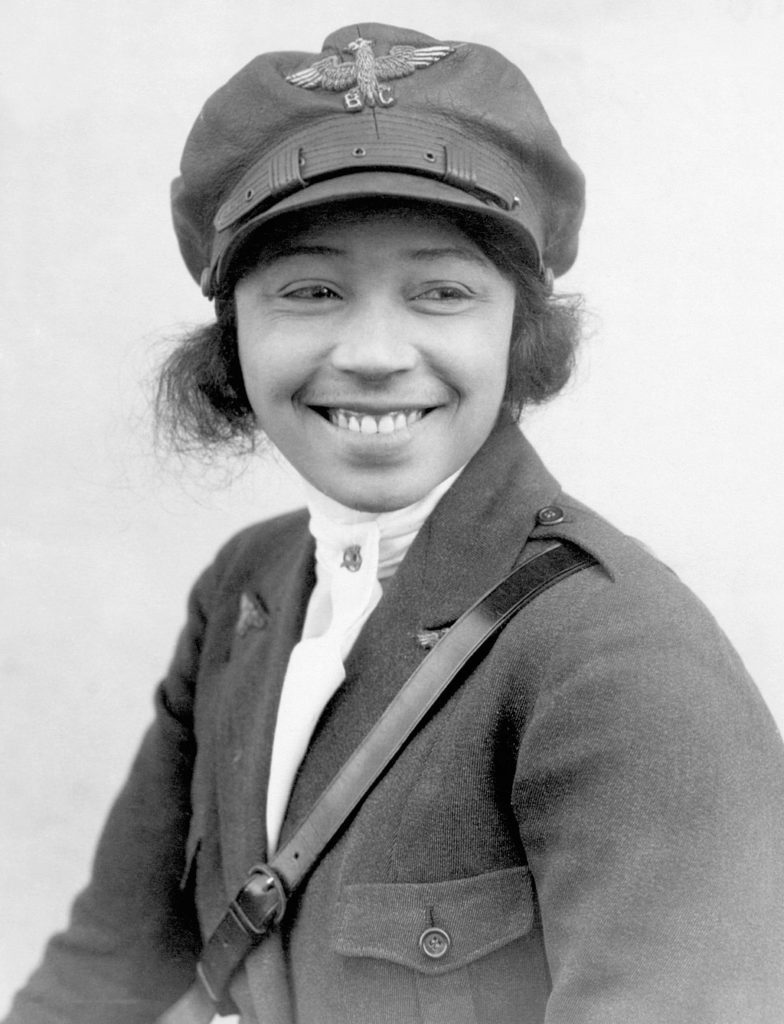
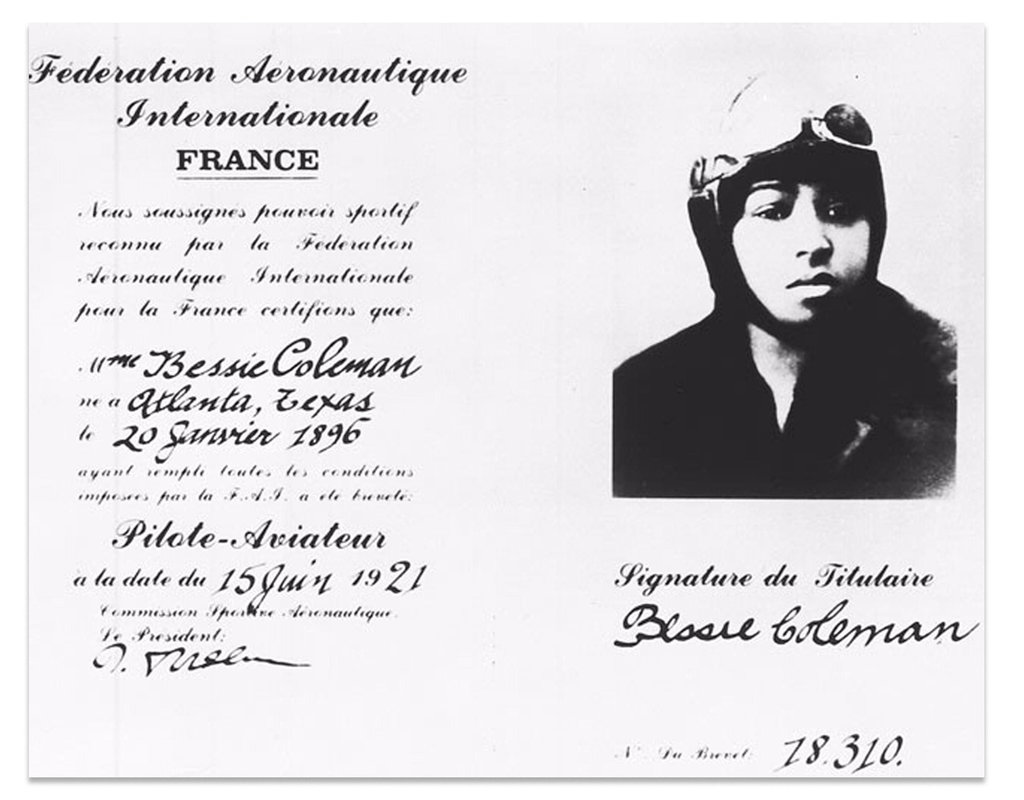
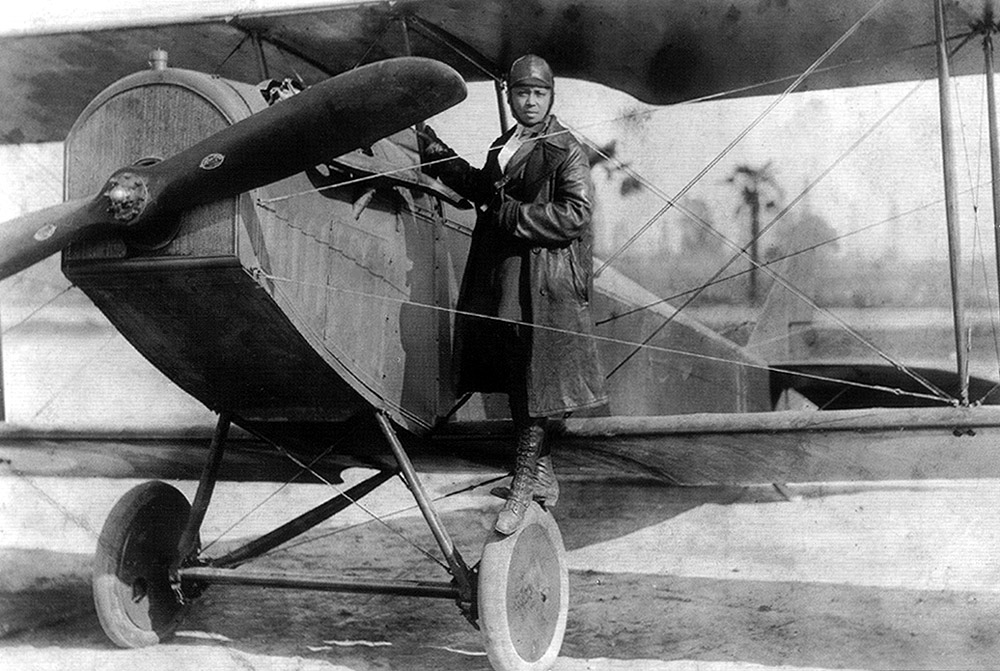
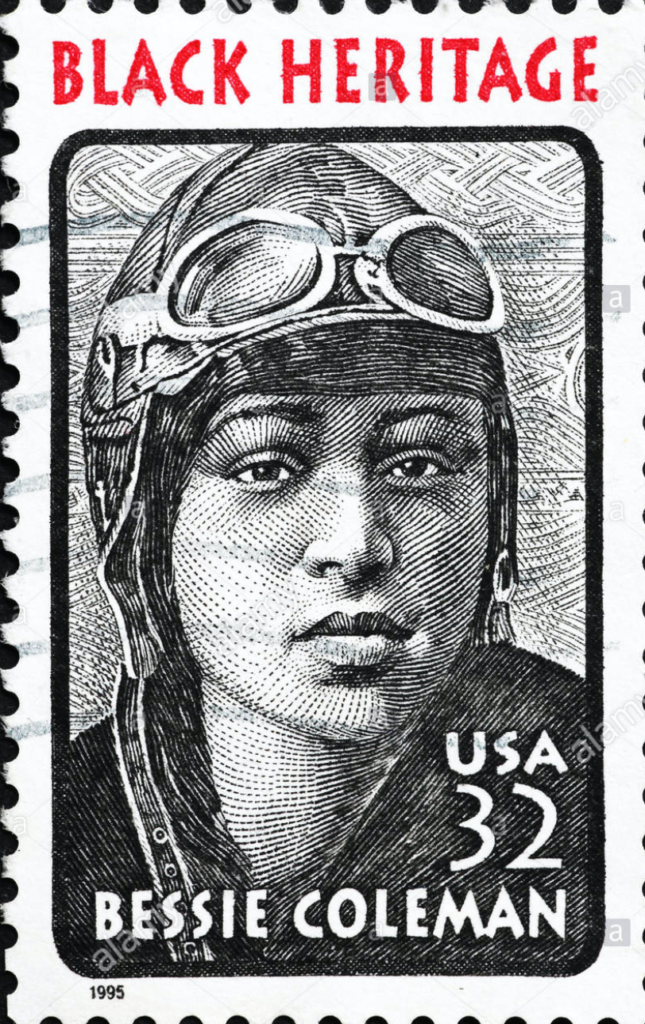
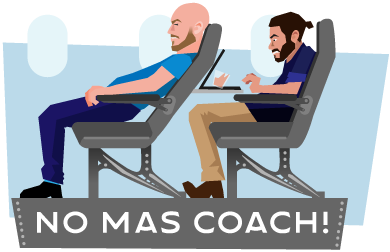





February 15, 2020
Thank you for sharing her story! 🙂
February 16, 2020
Nice nudge to great people who are not European-American! Thanks for the story.